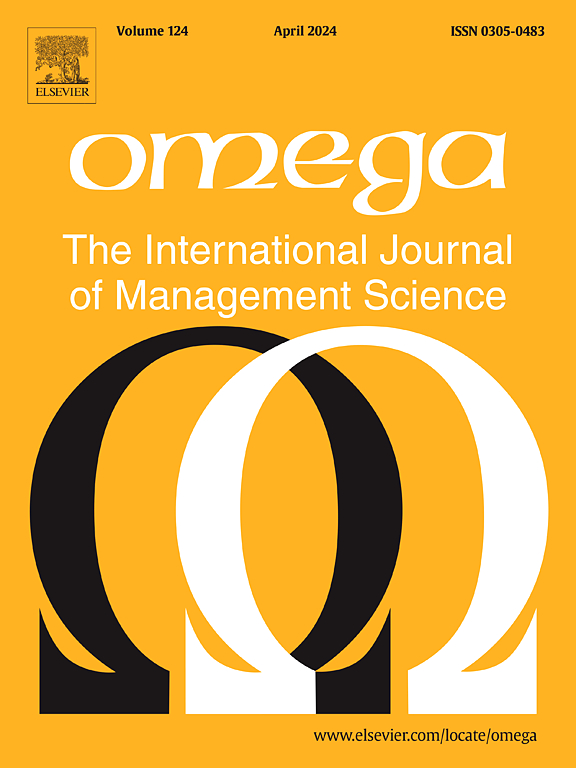持续评审库存模型:利用现货和期货价格协整进行有效成本控制
IF 7.2
2区 管理学
Q1 MANAGEMENT
Omega-international Journal of Management Science
Pub Date : 2025-05-03
DOI:10.1016/j.omega.2025.103355
引用次数: 0
摘要
商品价格的波动对库存管理中成本的有效控制提出了很大的挑战。实证研究表明,这种现货价格波动与商品期货市场价格波动显著协整。因此,本文提出了一种新的方法,可以利用这种协整使用连续审查库存模型。结果表明,非易腐商品的最优采购策略可以用连续区域序列来表示,即状态空间中的二维区域,它表示管理者应该继续等待更好的商品采购时间。这种基于区域的持续策略的一个独特之处在于,它最优地利用了商品现货和期货市场的价格信息,以实现有效的成本控制。通过数值分析,证实了将期货价格信息纳入商品采购的必要性。本文章由计算机程序翻译,如有差异,请以英文原文为准。
A Continuous-Review Inventory Model: Harnessing the Spot and Futures Price Cointegration for Effective Cost Control
The volatile commodity price nowadays poses a great challenge to the effective control of cost in inventory management. Empirical studies have suggested that such a spot price volatility is significantly cointegrated to the price variability in commodity futures market. This paper therefore proposes a novel approach that can take advantage of such cointegration using a continuous review inventory model. It is shown that the optimal procurement strategy of the non-perishable commodity can then be characterized by a sequence of continuation regions, i.e., two-dimensional areas in the state space, which indicates when the manager should continue waiting for a better time for commodity procurement. One unique feature of this continuation-region-based strategy is that it optimally utilizes price information from both the commodity spot and futures markets to achieve effective cost control. Through numerical analysis, we corroborate the necessity of incorporating the futures price information into commodity procurement.
求助全文
通过发布文献求助,成功后即可免费获取论文全文。
去求助
来源期刊

Omega-international Journal of Management Science
管理科学-运筹学与管理科学
CiteScore
13.80
自引率
11.60%
发文量
130
审稿时长
56 days
期刊介绍:
Omega reports on developments in management, including the latest research results and applications. Original contributions and review articles describe the state of the art in specific fields or functions of management, while there are shorter critical assessments of particular management techniques. Other features of the journal are the "Memoranda" section for short communications and "Feedback", a correspondence column. Omega is both stimulating reading and an important source for practising managers, specialists in management services, operational research workers and management scientists, management consultants, academics, students and research personnel throughout the world. The material published is of high quality and relevance, written in a manner which makes it accessible to all of this wide-ranging readership. Preference will be given to papers with implications to the practice of management. Submissions of purely theoretical papers are discouraged. The review of material for publication in the journal reflects this aim.
 求助内容:
求助内容: 应助结果提醒方式:
应助结果提醒方式:


